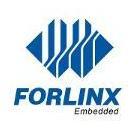Search the Community
Showing results for tags 'system on module'.
-
Forlinx has officially launched their latest System-on-Module, featuring the powerful StarFive JH7110 RISC-V chip. These versatile SoM and compatible carrier board are now available for order, catering to a wide range of applications including commercial, medical, and industrial automation. Recently, a few embedded products have emerged utilizing the same processor, including the VisionFive 2, Pine64, and Milk-V Mars. However, the FET7110 SoM will be the first product from Forlinx to feature the integrated Jinghong 7110 processor. See the JH7110 block diagram for reference. • JH7110 – 64-bit RISC-V, up to 1.5GHz (quad SiFive U74-RV64GC, up to 5.09 CoreMark/MHz) JH7110 block diagram The JH7110’s GPU integrates the IMG BXE-4-32 MC1 (up to 600MHz) which offers full support for mainstream APIs like OpenCL 3.0, OpenGL ES 3.2, and Vulkan 1.2. Regarding power consumption, Forlinx indicates that the JH7110 is segmented into eight independently switchable power domains. Additionally, the CPU frequency can be dynamically adjusted via software, allowing customers to fine-tune the frequency based on various application scenarios that require flexible control and power consumption. The JH7110 facilitates camera access through both MIPI-CSI and DVP interfaces, with ISP support. It enables video decoding capabilities of up to 4K@60fps and video encoding of 1080p@30fps. Moreover, the SoM supports HDMI (4K@30fps) and RGB (1080p@30fps) display output interfaces, along with MIPI-DSI (2K@30fps). Specifications listed for the FET7110-C SoM include: • Memory/Storage: ○ 2/4GB LPDDR4 RAM ○ 32GB eMMC 5.0 ○ 100 Mbps QSPI ○ SD 3.0/MMC 5.0 • Connectivity: ○ 2x GMAC for RMII/RGMII 10/100/1000 Mbps • Display/Audio: ○ 1x HDMI 2.0 (up to 4K@30fps) ○ 1x 4-lane MIPI DSI, (up to 2K@30fps) ○ 8-lane I2S PCM/TDM • Camera: ○ 1x 4-lane MIPI-CSI • Expansion: ○ 1x PCIe2.0x1, 2 PCIe2.0 controllers integrated w/ PHY • USB: ○ 1x USB 2.0 ○ 1x USB 3.0 • I/O Peripherals: ○ 6x UART, 7x I2C, 7x SPI ○ 1x SDIO ○ 8x PWM ○ 64x GPIOs ○ 2x CAN 2.0B (Up to 5Mbps) • Power: ○ 5V DC • OS: ○ Linux 5.15.0 • Mechanical: ○ 60 x 38mm ○ B2B connectors (3x 80-pin) Specifications listed for the OK7110-C development board include: • Memory/Storage: ○ 2/4GB LPDDR4 RAM ○ 32GB eMMC 5.0 ○ 100 Mbps QSPI ○ SD 3.0/MMC 5.0 • Connectivity: ○ 2x Gigabit Ethernet ports • Display/Audio: ○ 1x HDMI 2.0 port ○ 1x MIPI DSI ○ 2x Speakers ○ 1x Mic • Camera: ○ 1x MIPI-CSI • Expansion: ○ 2x PCIE 2.0 ○ 1x Micro SIM • USB: ○ 1x USB Type-C ○ 3x USB 3.0 • I/O Peripherals: ○ 2x CAN ○ 2x RS485 • Other Features: ○ 1x Power button, 1x Reset key ○ RTC battery • Power: ○ 12V DC (via barrel connector) • Mechanical ○ B2B connectors (3x 80-pin) These products are now available for ordering. Customers can find the product page for the FET7110-C SoM here.
-
- system on module
- riscv
-
(and 2 more)
Tagged with:

